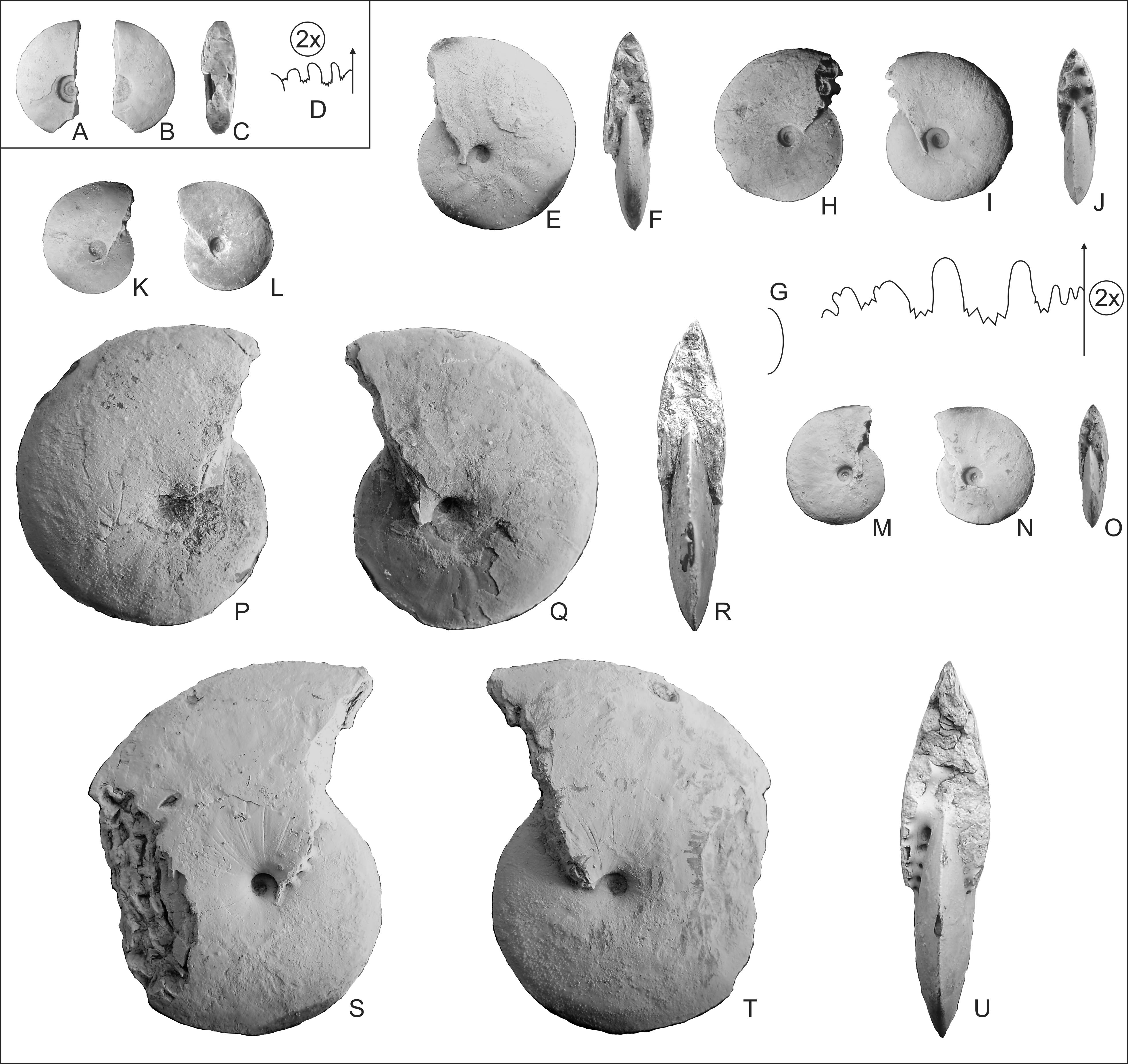THE MIDDLE SMITHIAN (EARLY TRIASSIC) AMMONOIDS OF GORNJI BRČELI (SOUTHERN MONTENEGRO)
DOI:
https://doi.org/10.54103/2039-4942/12253Keywords:
Ammonoids; Middle Smithian; biostratigraphy; Gornji Brčeli; Montenegro; correlation; palaeoecology.Abstract
A rich Early Triassic (Smithian) ammonoid fauna discovered near the village of Gornji Brčeli (southern Montenegro) is unique for the Early Triassic of the western Tethys. The Smithian there is represented by a series of several tens of meters thick brown-red to grey-green marls and clays with intercalated, mica-rich, thin dark grey sandstones, and subordinate occurence of redeposited oolitic limestone. The fossils have been collected as scree material over a few square meters but are considered as contemporaneous since no unnatural association (condensation) was detected. The ammonoid assemblage is represented by 15 species, belonging to the genera Aspenites, Cordillerites, Dieneroceras, Abrekites, Owenites, Pseudaspenites, Pseudosageceras, Truempyceras, Wyomingites, Hanielites, Galfettites, Parahedenstroemia, Lingyunites and Pseudoflemingites, and can, by the presence of Owenites zitteli Smith, be correlated with the late Middle Smithian Nyamalites angustecostatus beds of the southern Tethys, the upper Owenites koeneni beds of South China or the Owenites beds of North America. Taxonomic composition of the ammonoid assemblage shows great similiarity with those of Spiti (India), NW Guangxi (China) and Nevada (USA), but also some with those of Salt Range (Pakistan) and Timor. A markedly dominance of involute, oxycone and platycone morphologies distinguishes the Gornji Brčeli fauna from other contemporaneous faunas and points to specific palaeoecological environmental conditions. Previously, three new species were described from this locality and in the present paper one more is added (Parahedenstroemia? tatjanae). Two species hitherto considered as synonyms (Abrekites arthaberi and Owenites zitteli) are revised and treated as valid based on new material from Gornji Brčeli.
Metrics

Downloads
Published
Issue
Section
License
Copyright (c) 2022 MARTIN ĐAKOVIĆ , LEOPOLD KRYSTYN , MILAN SUDAR

This work is licensed under a Creative Commons Attribution-NonCommercial-NoDerivatives 4.0 International License.
The journal allow the author(s) to hold the copyright without restrictions.
Accepted 2021-12-02
Published 2022-04-11






